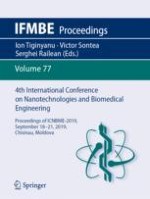2020 | OriginalPaper | Buchkapitel
Qualitative Method to Control Toxic Impurities in Drinking Water
verfasst von : O. Kulikova, A. Siminel, A. Micu, N. Siminel
Erschienen in: 4th International Conference on Nanotechnologies and Biomedical Engineering
Aktivieren Sie unsere intelligente Suche, um passende Fachinhalte oder Patente zu finden.
Wählen Sie Textabschnitte aus um mit Künstlicher Intelligenz passenden Patente zu finden. powered by
Markieren Sie Textabschnitte, um KI-gestützt weitere passende Inhalte zu finden. powered by
